The Silver King is one of the most sought after gamefish because of its combination of massive size, strength, high flying antics, and elusive nature. This is a humbling fight where we have all been forced to “bow” to the tarpon’s might. Sure, you know to flock to the passes in the summer for the mammoths and tread the insect infested backwater creeks for the juveniles, but have you ever been curious why? Our angling behaviors are often ingrained into our brains – sometimes from birth – but there is always a scientific explanation for a tarpon’s habitat use. Unfortunately, we are still not able to explain many aspects of tarpon biology – yet. Part of Bonefish & Tarpon Trust’s mission is to learn and tell the tarpon’s story. As we learn more about tarpon, we take on the responsibility of conservation. Education and science for conservation is Bonefish & Tarpon Trust’s primary goal, and one that all anglers should align themselves with to sustain a healthy tarpon fishery for generations. This article summarizes the life cycle of tarpon, and highlights research and conservation needs so anglers can be as involved in keeping the fishery healthy as they are in their enjoyment in dueling with the Silver King.
Spawning is where it all begins. This remains the most unknown variable of the equation, and one of the most important. Protection of spawning sites is vital to maintaining the tarpon fishery, because without the future generations that result from spawning there would be no tarpon fishery at all. We know that spawning occurs in late spring through summer, and the limited information available suggests that tarpon spawn over 100 miles offshore, where they presently receive no protections. Limited data also indicate that spawning occurs in association with the full and new moons, but we don’t think that every tarpon spawns every month. Anecdotal evidence from anglers also support this theory – descriptions of schools of tarpon heading offshore prior to the full and new moons, and back into coastal waters in the days following during spawning season. Some of the satellite tag data show that tarpon undergo deep dives, to 400’ depth, during the days just prior to full and new moons, and we think this may be associated with spawning. The theory is that pressure difference between depth and the surface aids males and females in the release of their sperm and eggs into the open water, a spawning strategy known as broadcast spawning. The eggs are fertilized in open water, and hatch as small leptocephalus larvae.
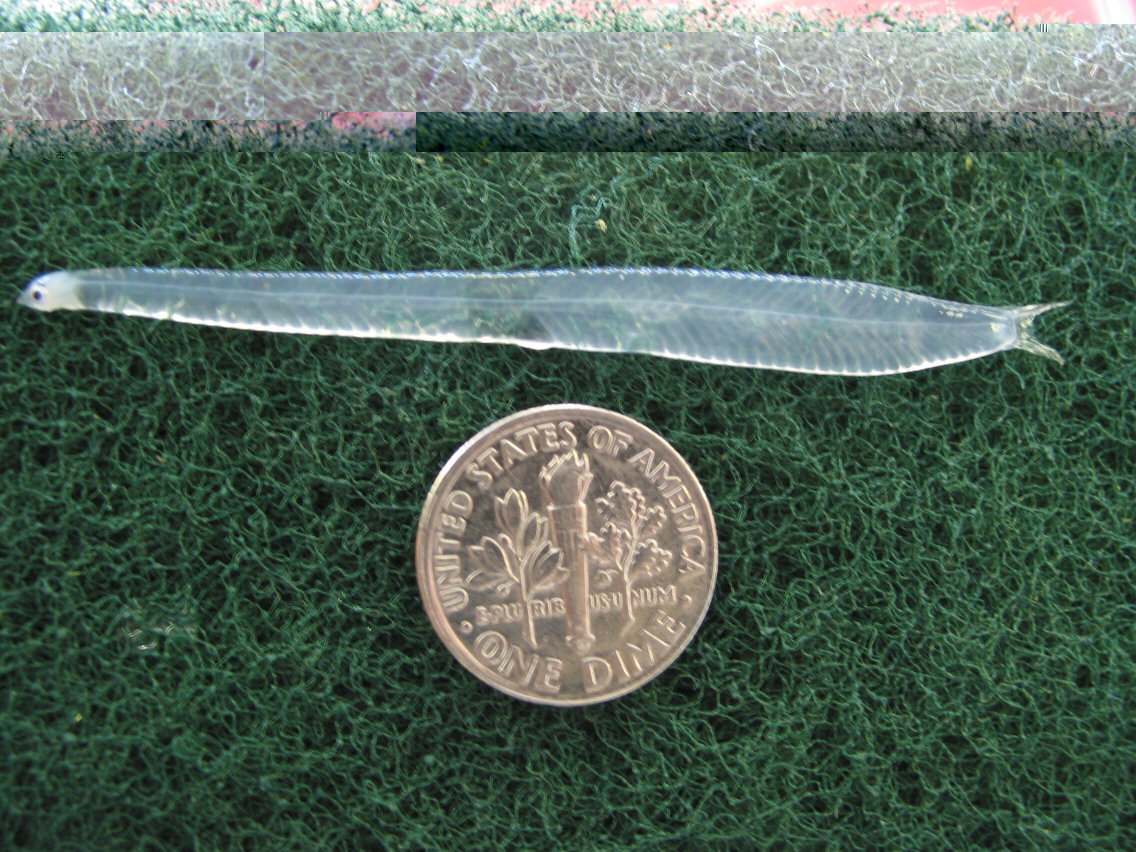
Once the eggs hatch, the month-long larval stage begins. Tarpon start out looking like a miniscule eel with the transparency of a jellyfish (called a leptocaphalus). How do we know that tarpon leptocephali are in the open ocean as plankton for a month or more? They have small otoliths (aka earbones) that gain a new layer each day. When leptocephali are captured, and their microscopic otoliths examined, their age (in days) can be determined simply by counting the layers. This is also how spawning times have been determined – just count backwards from the day of capture, and the date of spawning can be determined. A leptocephalus grows to approximately 3-4 inches long and has quite exceptional mobility for its size. Their capacity to use their limited swimming ability to navigate currents from over 100 miles offshore into estuarine conditions is a remarkable feat. On the east coast of Florida, near the Indian River Lagoon, larval tarpon enter the estuary at night, using the cover of darkness as protection from predators. They appear to prefer entering the estuary through the shallowest cuts possible. Once inside the estuary, the journey is far from over. The leptocephali must traverse varying habitats including seagrass beds, oyster reefs, and shoals full of predators until they reach their final destination where they can safely continue their transformation into juvenile tarpon.
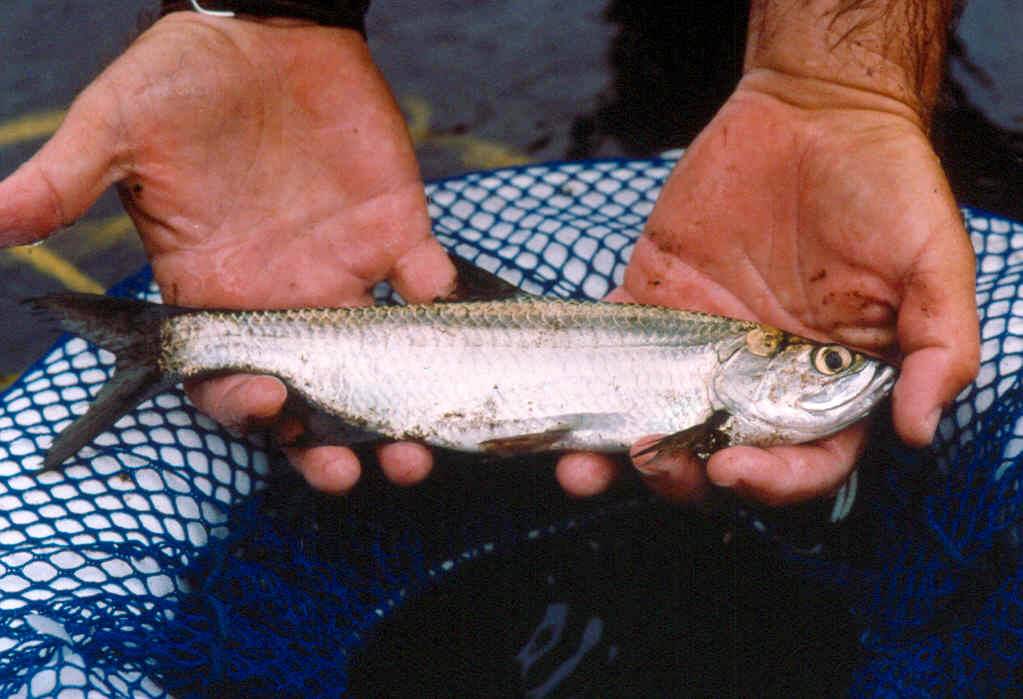
During the juvenile stage, a tarpon looks like a miniature version of its adult counterpart. Juvenile tarpon tend to thrive in backbay creeks and protected estuarine environments where there are very few predators. Why are there fewer predators than the open waters of the estuary? The backwater areas usually have stagnant water, which causes low dissolved oxygen conditions. Juvenile tarpon can deal with the hypoxic (low oxygen) conditions with help from their swim bladder. Although most fishes possess a swim bladder that helps with buoyancy control, tarpon have the ability to control the contents of their swim bladders by obtaining and releasing the ambient air and can use that air for respiratory functions. This allows the juveniles to obtain much of their oxygen from the air rather than the water. Since most fish need oxygenated water to survive, juvenile tarpon predators are unable to access these backwater habitats.
The fact that juvenile tarpon require such specific habitats, and that these mangrove and wetland habitats continue to be lost, underscore the need for protecting these important habitats. And since juvenile tarpon aren’t found in equal abundances in all wetlands, research is necessary to identify which locations are most important so their protection can be prioritized.
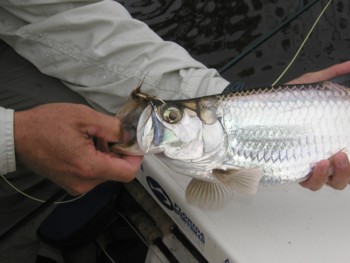
Many think that tarpon are obligated to gulp air, but research has shown this is not true. Anglers often see adult tarpon rolling in well oxygenated habitats, such as passes and in harbors. Studies link this behavior to the learned habit that was initially a juvenile survival necessity. Rolling for adult tarpon seems to be a preference more than a survival strategy which was confirmed by one research study. Adult tarpon were placed in an artificial habitat that was well oxygenated and their ambient air supply was cut off by placing a lid over the tank. Although the tarpon attempted to roll at the surface (a behavioral response), their respiratory functions were not hindered by the lid.
As they are throughout their lives, juveniles are opportunistic feeders. They eat small crustaceans (copepods, mysid shrimp) and worms, for example, and expand their diet to include fish as they grow.
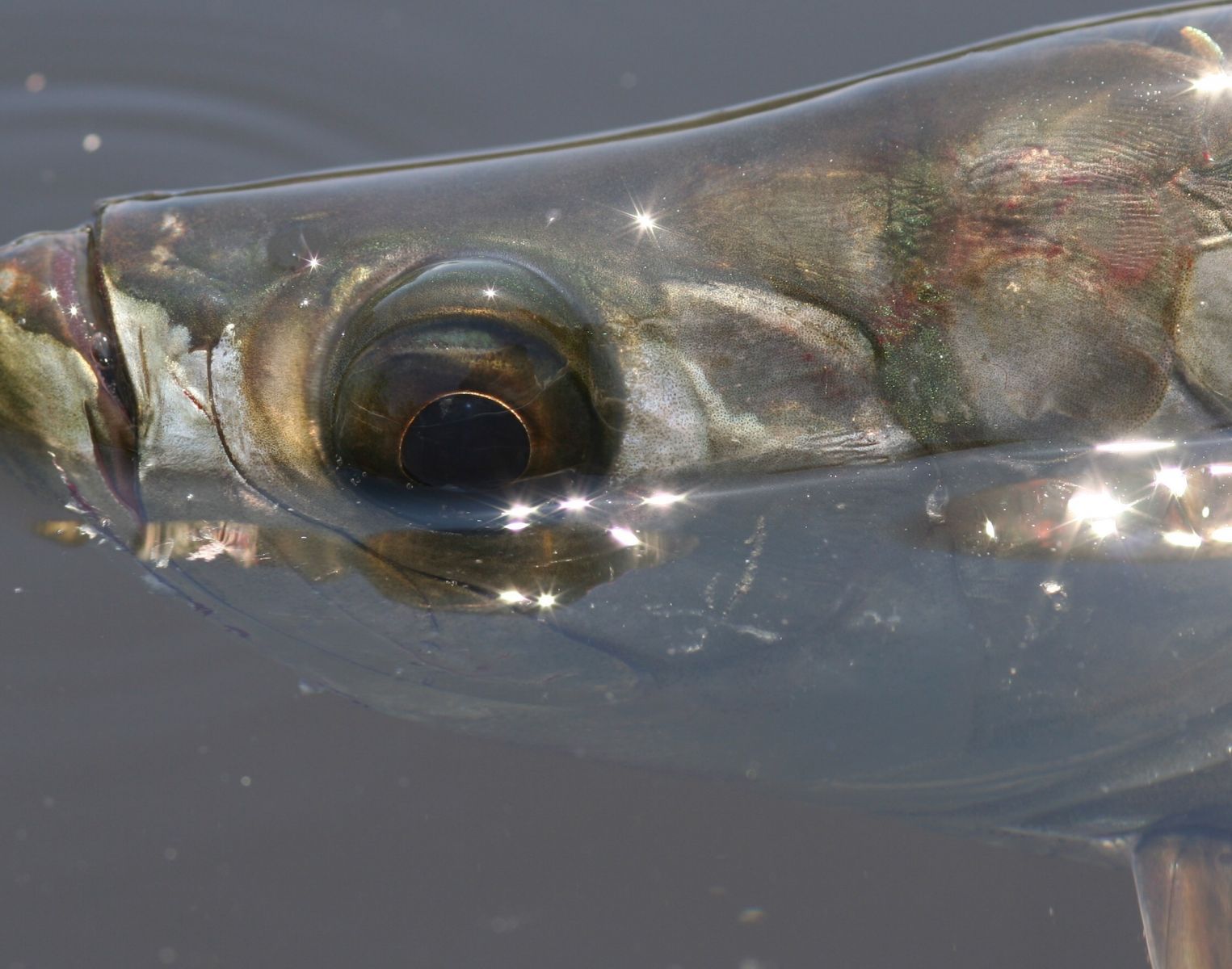
The sub-adult stage of the tarpon life cycle, from 2 years old to maturity, is similar to that of a teenager: they’re still experimenting with their bodies; they look like adults but still act like children; they eat and eat but never leave home. Sub-adult tarpon expand their diet, including crabs, fish, shrimp, and worms. They also expand their use of habitats and the ranges that they travel, although we don’t think that the younger sub-adults move great distances.
The adult phase of the tarpon life cycle is what makes anglers lose sleep and quit their jobs. Many have conquered the Silver King, but more often than not it is the angler who has been conquered by an adult tarpon. The longevity of a tarpon is upward of 80 years, and as we all know, with age comes wisdom. Decades of experience with anglers may explain why large tarpon so often get the upper hand. Tarpon take quite a while to reach maturity. Female tarpon reach reproductive maturation around age 10 in Florida and age 12 in Costa Rica. One study by Roy Crabtree in 1997 found that female tarpon are approximately four and a half feet long at maturity and males at just fewer than four feet. The slow growing, late to mature characteristic of tarpon make them especially vulnerable to habitat loss and overfishing. Such slow growing fish typically take a long time to recover from any population declines. This is but one reason that BTT is pushing for increased diligence in tarpon fisheries management.
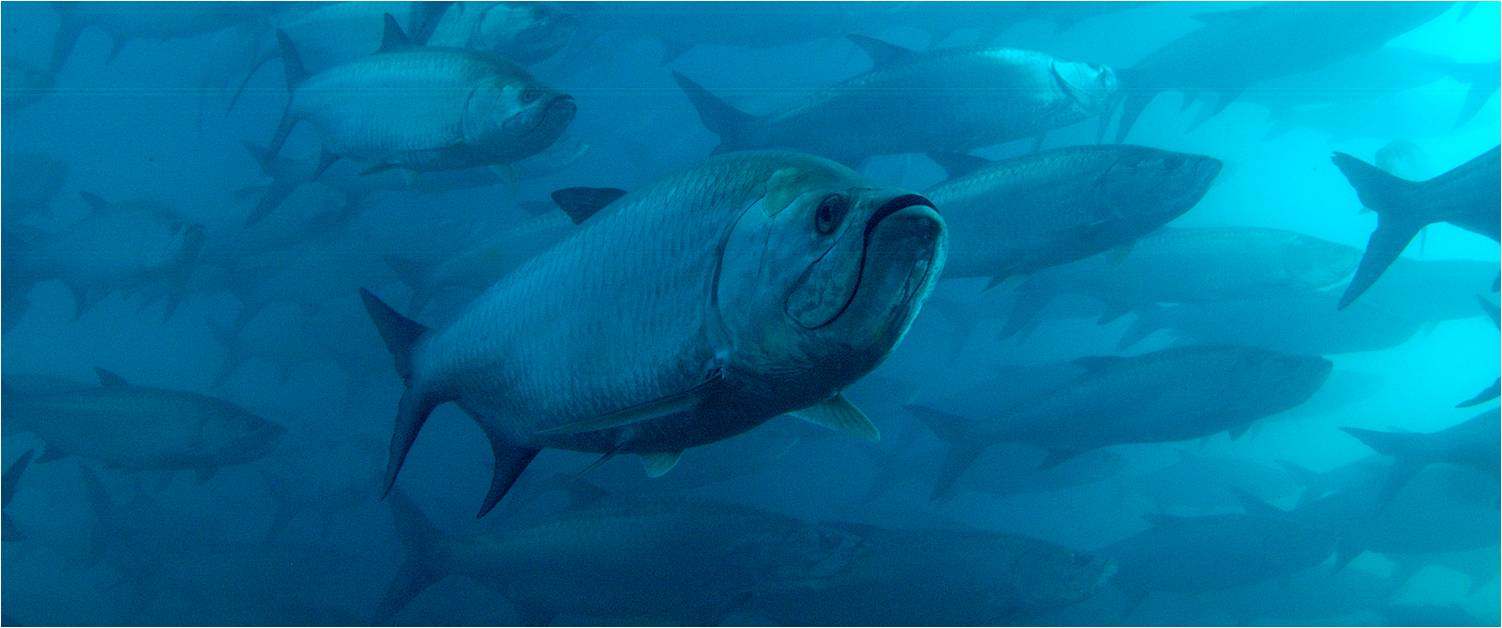
Why do some tarpon migrate long distances and others stick close to home? Through tagging we have discovered that adult tarpon have the ability to travel long distances, at times reaching 1200 miles. But many of the tagged adult tarpon stayed within a hundred miles of the initial tag site. The reasons behind and the frequency of tarpon migrations are not yet fully understood.
Central America, a spot along tarpon migration routes, harvests tarpon for meat and roe. If we are all experiencing the same tarpon populations, then a decline in one area due to harvesting would affect all other angler hot spots that share the same fish. This is definitely a cause for concern, and a reason for you to help BTT fund satellite tagging research.
One of the most powerful ways for recreational anglers to take part in conservation on a daily basis is by practicing the best methods for catch and release fishing. If anglers know the proper technique to release a tarpon without causing damage to the fish, the chances of the tarpon’s survival after release will be high, and we will be able to have a sustainable tarpon fishery long into the future. The first goal is to match the tackle to the fish. If a fly angler is casting to a school of 130 pound tarpon using an 8 weight rod, for example, if the rod holds up the fight time will be prolonged and the fish will be exhausted. Exhausted fish are more susceptible to predation because they tend to lose their equilibrium and roll over. And research on bonefish showed that a fish that loses equilibrium is six times more likely to be attacked by a predator. If you are fishing for tarpon in a spot where predators are abundant, you may want to consider relocating to another location until the predators disperse.
Often anglers attempt to revive tarpon by quickly moving the fish back-and-forth alongside the boat. A fish’s gills are designed to uptake oxygen only when the fish is moving forward through the water. If your boat has a slow idle, you can hold the fish alongside the boat while idling forward. If not, try idling your vessel for a short length, then put the boat in neutral or shut it off to create a forward gliding motion for the fish. You don’t want to pull the fish through the water too fast since this is also not good for the fish.
While you are handling the fish after capture, it is best to use tackle pliers to remove the hook from the lip with minimal contact to the fish. If your fish is hooked in the gullet, clip the line as close as you can to the hook. If you must handle the fish, do so using wet, bare hands and keep air exposure brief (research on bonefish showed that 15 seconds is the max) – including snap shots.
It is best not to hold a tarpon vertically by the jaw above the water. Tarpon and other fish are built for low gravity conditions where their body weight is supported by the water and the buoyancy of their swim bladder. If held vertically out of the water, the tarpon’s muscles, bones, and inner organs are subjected to forces they are not used to. If the fish is removed from the water, you should hold the fish horizontally, supporting it at its head and midsection. If you need to weigh the fish, place it in a damp sling and briefly suspend the sling from the scale.
Bonefish & Tarpon Trust is a non-profit organization that strives to conserve the tarpon fisheries – not preserve. There is a common misconception that scientific “meddling” leads to a complete termination of recreational and commercial fishing, or at the least more harsh regulations. This is the opposite of BTT’s mission. Our premise is to sustain a healthy fishery for everyone to enjoy for generations. We find that anglers are often unaware of threats to the fisheries and once they have been educated from a scientific standpoint, they frequently agree with our recommendation of best practices. We aim to join forces with everyone who loves tarpon fishing as much as we do and pursue this sacred sportfish for decades to come. Remember, conservation starts with conversation and word of mouth is the best way express the necessity for knowledge of this species. Bonefish & Tarpon Trust is working to drive this change in the direction that is most beneficial to the species we target – the coveted Silver King.



